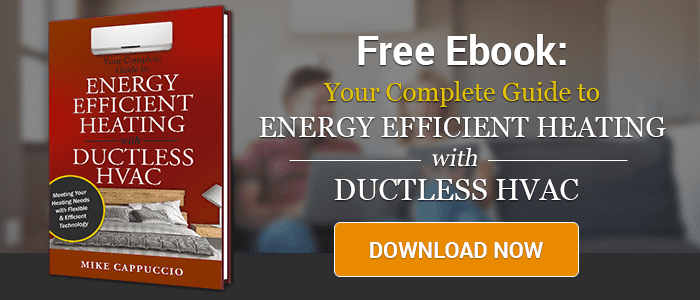Mike Cappuccio discusses the top 5 mistakes to avoid when replacing a heating system, including installing too large of a heating, not considering installing A/C at the same time, and not looking at all of the latest technology that is currently
Hi, my name is Mike Cappuccio, I’m from N.E.T.R., Inc. Incorporated in North Andover, Massachusetts. Today, I’d like to talk to you about the top five mistakes to avoid in replacing a heating system. Let’s kind of go through these. I have five examples here I’d like to go over with you. The first one is not looking at all of the technologies when you go to buy a heating and cooling system. In today’s world, in a heating system, the heating systems that are typically in your home today are 80% efficient.
Now, in today’s heating technology world, we have 98% efficient furnaces that basically don’t go into a chimney anymore, they are vented with two PVC pipes to the outside. Much more efficient than what we used to use in the old days. Technology is such a big thing that we leave out when we go to replace a heating system. We have electronic air cleaners now, we have four-inch pleated filters now, from an air cleaning perspective. We also have humidification that gets left out a lot of times and doesn’t get added in.
The other thing that people don’t look a lot at is they don’t look at the technology that’s available today from being able to use your system when you’re not in your home. Examples, being able to have smart controls. Controls you can operate from your smart phone. Controls you can look at from a computer when you’re not home. If you’re going on vacation, I mean, and you want to see what your heating and cooling system is doing. I mean, I want to know in New England if my heat’s on if I’m in Florida. I want to make sure my heat’s working.
With today’s technology, you can get email alerts, text message alerts, things like that, that say, “Hey, my heating isn’t working.” When you really take a look at this, you have to take a look at the technology that’s available today.
The second thing we look at is, in a lot of homes, the heating system was too big to begin with, that was put in in the ’80s — ’70s and ’80s. You have to look at what you’ve done to your home in the past 20 to 30 years. Have you put new windows in? Have you put insulation in your home? Have you done anything? Have you put new siding on your home? Most people have done a lot of this.
When we look at the heating system, 9 times out of 10, it’s actually too big for the home. When a proper manual J-load calculation is run on a home, we can look at that home and say, “Hey, this system doesn’t need 80,000 BTUs, it might only need 40. Again, reducing your energy costs when you do that. A lot of times these systems are too big for the home.
The third thing that happens, a lot of the time, is that people don’t consider putting in air conditioning at this point in time. If you’re going to be removing your furnace, whether it’s in your attic or it’s in your basement, wherever that is, you might want to look at installing air conditioning at this point in time when you’re doing this. Some of the ductwork might need to be reworked at that point in time. Now is the best time to do that, when you have the heating system out. Reason being, the ductwork is going to have to be redone anyway, so why don’t we just fix it now and put the cooling system in when we do that? So, this would be the best time to be looking at that when we’re going to be doing that.
The fourth thing is not thinking really about how you use your home and what zones you spend a lot of time in in your home. There are a lot of different systems today with zoning systems you can add into your home with separate thermostats in separate rooms. You might even want to look at a Mitsubishi ductless system for areas where you might want different temperatures in the home. This might be something you want to consider when you’re looking at replacing your heating system now.
Example — you have a home office that you spend a lot of time in, and all the people in your home are now either gone to school during the day or they’ve gone to other parts of the home or they’re just not in the home. At that point in time, we might want to look at putting a cooling system in the home office, because that might be the hot area in the home in the wintertime. We can look at how we use those zones in our home. A lot of times this is really left out, a lot of the time, when we look at replacing heating and cooling systems.
Number five is probably one of the most important ones. People tend to always go to the cheapest option. Look, I have this furnace today, I want to replace it with exactly what I have and I just want the cheapest and “down and dirtiest” thing to put in my home. Sometimes, not the best solution. Cheapest is not always the best. It’s really — a lot of this is, how is the contractor going to install it? What are they going to install?
If you’re taking an 80% furnace out and you’re putting an 80% furnace back in, you’re doing yourself an injustice. Because at that point, you could probably be spending a few hundred dollars more getting a much higher efficiency furnace and probably within one to two years you have a very good payback on what you’ve paid for the additional furnace cost. At that point, it just doesn’t make any sense. You have to be looking at these options and not just going with the cheapest options.
A lot of this is sometimes based to on, “Hey, how is it getting installed? Maybe what’s being left out that I need, that I don’t need? Is it being brought up to the local codes?” Sometimes if you’re getting the cheapest price you might not be having a heating system even brought up to the new local codes. Example — all new furnaces require a hardwired CO2 detector to be installed. A lot of times when permits don’t get pulled, these things don’t get done.
So you got to be careful when you go with the cheapest price all the time. You have to look at, “What is the cheapest price and what am I getting for the cheapest price?” Always take that into mind when you look at going, when it’s just a cost decision.


